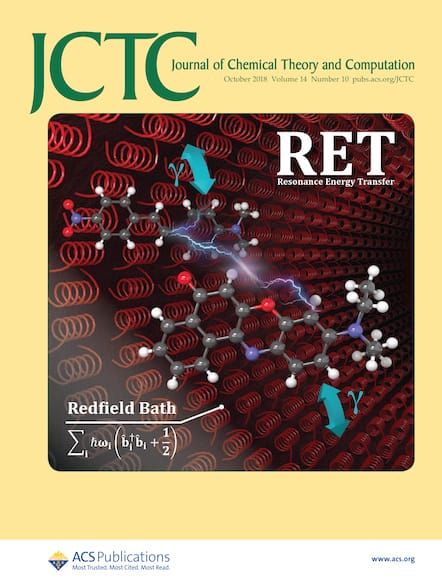基于冷冻对型pccd的方法及其双电离变体预测原型bn掺杂光源的性能。
IF 5.7
1区 化学
Q2 CHEMISTRY, PHYSICAL
引用次数: 0
摘要
新颖、稳健、计算效率高和可靠的理论方法对于所需分子性质的大规模建模是必不可少的。一个这样的例子是轨道优化对耦合-星团双星(o - pccd) ansatz及其各种CC扩展,其范围从闭壳基态和激发态模型到开壳模型。具体来说,电离势运动方程冷冻对(IP-EOM-fp)CC方法被证明是与标准CC型方法竞争的,用于模拟有机电子的电离势。在这项工作中,我们将现有的基于ip - eom - pccd的方法扩展到它们的双电离势(DIP)变体,从而得到各种DIP- eom - fpcc模型,包括双激发。这些方法为使用各种pCCD参考函数实现开壳单态、三重态和五态打开了道路。他们的准确性测试了单线态-三重态间隙的邻苯、间苯和对苯。然后,应用最精确的模型研究了硼和氮掺杂对设计原型萘基给体和受体的影响。我们的结果用标准的方法和可用的实验数据证明了一致和可靠的结果。最重要的是,fpcc类型的方法在强相关情况下的性能略好于DIP-EOM-CCSD,在确定单重态-三重态间隙时,动态相关占主导地位的系统的性能相似。本文章由计算机程序翻译,如有差异,请以英文原文为准。
Frozen-Pair-Type pCCD-Based Methods and Their Double Ionization Variants to Predict Properties of Prototypical BN-Doped Light Emitters.
Novel, robust, computationally efficient, and reliable theoretical methods are indispensable for the large-scale modeling of desired molecular properties. One such example is the orbital optimized pair coupled-cluster doubles (oo-pCCD) ansatz and its various CC extensions, which range from closed-shell ground- and excited-state models to open-shell variants. Specifically, the ionization-potential equation-of-motion frozen-pair (IP-EOM-fp)CC methods proved to be competitive with standard CC-type methods for modeling the ionization potentials of organic electronics. In this work, we extend the existing IP-EOM-pCCD-based methods to their double ionization potential (DIP) variants, resulting in various DIP-EOM-fpCC models, including up to double excitations. These methods open the way to reach open-shell singlet, triplet, and quintet states using various pCCD reference functions. Their accuracy is tested for the singlet-triplet gaps of the ortho-, meta-, and para-benzynes. Then, the most accurate models are applied to study the effects of boron and nitrogen doping on designing prototypical naphthalene-based donors and acceptors. Our results demonstrate consistent and reliable outcomes with standard methods and available experimental data. Most importantly, fpCC-type methods show slightly better performance than DIP-EOM-CCSD for strongly-correlated cases and similar performance for systems dominated by dynamical correlation when determining singlet-triplet gaps.
求助全文
通过发布文献求助,成功后即可免费获取论文全文。
去求助
来源期刊

Journal of Chemical Theory and Computation
化学-物理:原子、分子和化学物理
CiteScore
9.90
自引率
16.40%
发文量
568
审稿时长
1 months
期刊介绍:
The Journal of Chemical Theory and Computation invites new and original contributions with the understanding that, if accepted, they will not be published elsewhere. Papers reporting new theories, methodology, and/or important applications in quantum electronic structure, molecular dynamics, and statistical mechanics are appropriate for submission to this Journal. Specific topics include advances in or applications of ab initio quantum mechanics, density functional theory, design and properties of new materials, surface science, Monte Carlo simulations, solvation models, QM/MM calculations, biomolecular structure prediction, and molecular dynamics in the broadest sense including gas-phase dynamics, ab initio dynamics, biomolecular dynamics, and protein folding. The Journal does not consider papers that are straightforward applications of known methods including DFT and molecular dynamics. The Journal favors submissions that include advances in theory or methodology with applications to compelling problems.
 求助内容:
求助内容: 应助结果提醒方式:
应助结果提醒方式:


